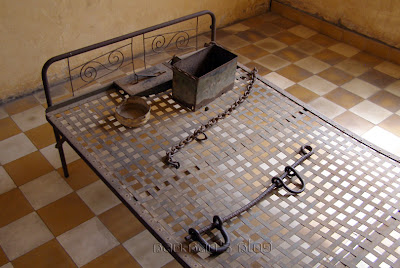 |
| None of these were Jari's friend... these were soldiers in Hua Hin. |
Back in May of 1962 a girl group called The Shirelles enjoyed three weeks at #1 on the Billboard charts with "Soldier Boy," a sweet sounding song at the time, but one that hasn't aged all that well, although that could be said for a lot of
us, I suppose. Nevertheless it comes to mind when I see military men in Thailand walking around with their girlfriends or wives. It came to mind a few times when I was in Bangkok a few years back and heard tales from a Norwegian friend named Jari. He had met the soldier while inside a larger department store and - as strange as it may sound - they'd formed a casual friendship and spent portions of the past few days/evenings together.
In all honesty the relationship between Jari and the soldier was more one of convenience for the both of them, I suppose; Jari was a single man on holiday, making the most of the end of his "middle aged" years - I believe he was 59 - and the soldier was deeply closeted but appreciative of the attention of an older man.
That in and of itself isn't so odd (did I just hear a few of you say "thank goodness" out there?) but it's a little less likely for someone on holiday to meet a person merely by chance and not as part of a
Rented Admirer arrangement, i.e. online sites, bars, clubs or in some parks, if one is a little more cavalier (or reckless). Nevertheless, it had happened, and the two had spent a lot of time together over three days. It would end when Jari went home, and they haven't stayed in contact.
This is, to the best of my recollection (and notes) is the conversation he and I had on the fourth morning:
Jari seemed more cheerful than usual when he walked up next to my table and said "Good morning!" I invited him to sit and have breakfast with me but he’d already finished his an hour or so before me. “Have coffee, then,” I suggested, and he sat down across from me, leaning forward with a somewhat conspiratorial tone to his voice to report “I met the soldier again last night." He rolled his eyes as though he was exhausted, but happy.
"And?" I asked. “Oh, my God, he almost killed me! He may not be 'out' to much of anybody, but he certainly made up for lost time last night.” “Serves you right,” I laughed, “he’s probably young enough to be your grandson.” “No, not
that young,” Jari protested “he’s thirty two.” “OK, maybe your
son, then,” I laughed. “Either way, you’re probably lucky your heart held up!”
Jari briefly feigned a heart attack, laughed and went on: “We went to MK… MKB… what’s that place called again?” “MBK,” I said “Mah Boon Krong mall.” “Yes, there. Well, we did some shopping and then he took me to the most delicious restaurant nearby, I didn’t see a name and I’d never find it again,” he said, stopping to savor the thought. “Happens to me all the time,” I assured him. “I follow along and enjoy the place - you just have to enjoy the moment while you’re there.”
 |
| A portion of the interior open area at MBK Mall |
I was nursing a glass of fresh-squeezed orange juice, taking small sips as he launched into an enthusiastic but discreet report of the portion of their evening back at the hotel. Evidently the young soldier had been without needed companionship for an exceptionally long time, and as Jari wasn't much for clubs and bars I suspect it was somewhat the case with Jari, too.
At 59, the pickings back in Norway for what would be “his type” were probably somewhat slim. Jari wasn’t what I’d classify as a sex tourist by any stretch, but he was appreciating - with sincere gratitude - the admiring looks of the Asian males here who can see beyond the wrinkles, so to speak.
"Where is he now?" I asked, and Jari replied "Oh, he was up by 05:00, on his way back to where he needed to be by 07:00 this morning. I came down to breakfast, went up to my room, did some reading and now I'm ready to head out and do some exploring. Do you have a favorite massage shop?" "I do," I said. "We'll have to fill a couple of hours before my regular guy will be there, but I'm willing to go wander Lumphini Park beforehand, and I'll take another therapist so you can have the best." And that's precisely what we did.
 |
| A mild morning commute in Bangkok |
That evening I rode along on the BTS a few stops out of my way to meet his new friend, who turned out to be a quite handsome and pleasant man. They headed off to dinner, I headed off to the movies.






















































